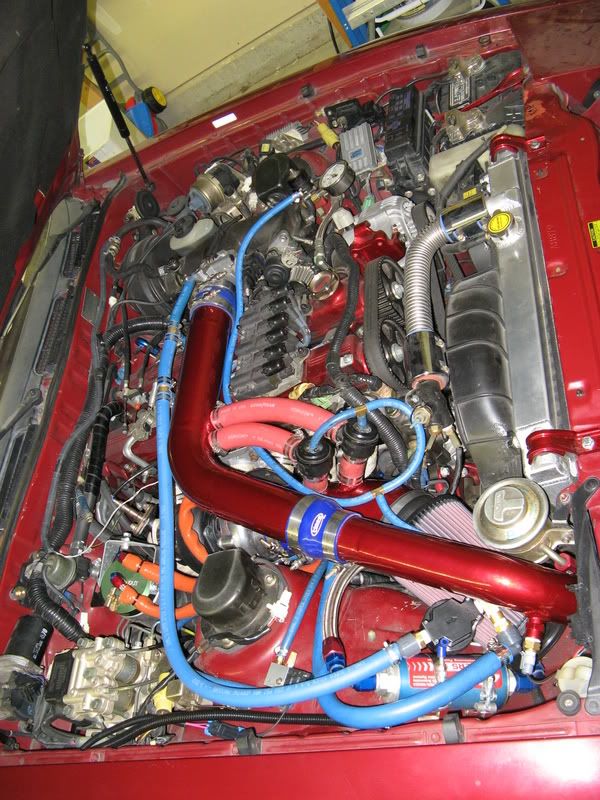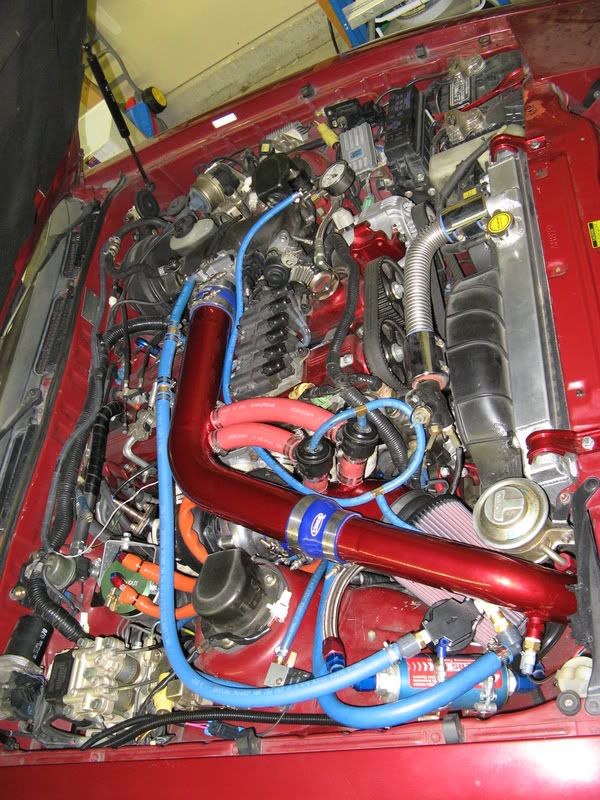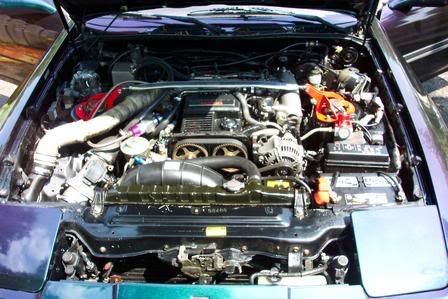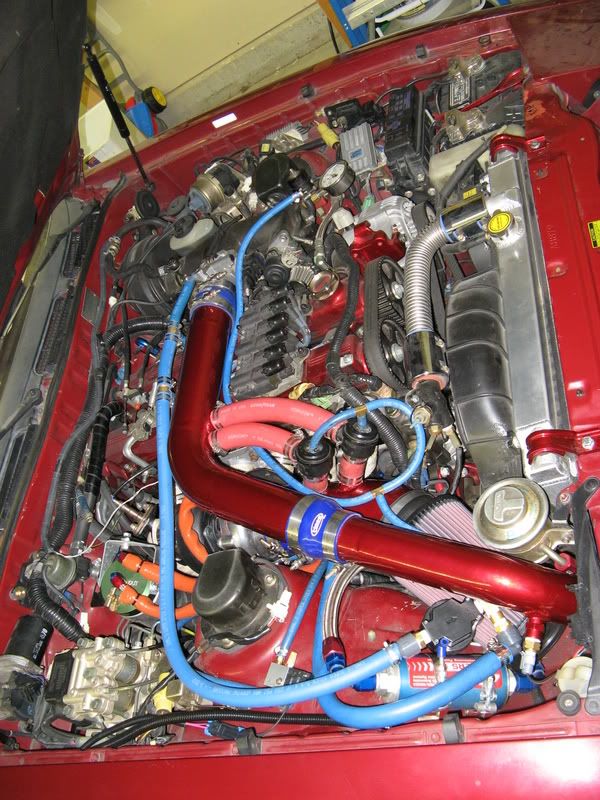im about to do one because ive ben haveing a little oil resadue/blowby from the valve covers to the INTK after the maf befor the TB and since my MAF sits lower than my TB over time it killed my MAF all the oil in the INTK scared the hell out of me thought it was another blown TB. ill post some picks
oil catch can install
- Thread starter racerjoe2004
- Start date
You are using an out of date browser. It may not display this or other websites correctly.
You should upgrade or use an alternative browser.
You should upgrade or use an alternative browser.
What happened it just stopped?? It seems no one has found which method to use? i was wondering if JJ or any of the other moderators have pictures they can put up for us to see? I read everyone's ideas on how they have their oil catch can setup but i think it might help better if we see pictures, just my opinion:icon_bigg. I want to setup a oil catch can but im searching around to see which setup is the most effective and how. sorry if i came in out of nowhere, i just did not want to post another of the same thread.:icon_razz
Adjuster
Supramania Contributor
Here is mine.
Using a Parker colealessing (I know I spelled that wrong, I'm sure.) air seperator to keep any oil vapor out of the intake pipe/turbo/FMIC and IC pipes as much as possible.
Yes, that is a K&N filter, sucking dirt and all...
Mine goes just like stock, from the throttle body, to both valve cover ports, and then around to the Parker catchcan/filter, and then into a port just before the turbo, similar to the stock accordian hose setup, and just across from the two blow/bypass valves that actually flow quite a bit of air during off boost times from what I can tell. (They make hoot owl sounds when the air flows through them, and my car when it's running, sounds like nothing else around... LOL)

Using a Parker colealessing (I know I spelled that wrong, I'm sure.) air seperator to keep any oil vapor out of the intake pipe/turbo/FMIC and IC pipes as much as possible.
Yes, that is a K&N filter, sucking dirt and all...
Mine goes just like stock, from the throttle body, to both valve cover ports, and then around to the Parker catchcan/filter, and then into a port just before the turbo, similar to the stock accordian hose setup, and just across from the two blow/bypass valves that actually flow quite a bit of air during off boost times from what I can tell. (They make hoot owl sounds when the air flows through them, and my car when it's running, sounds like nothing else around... LOL)

WOW:aigo:!! Nice setup, now i have a much better understanding of how a oil catch can looks like. Couple questions.. The intercooler pipes, where did you get those?? I really like your setup and i might just do that, with the two blow off valves. Interesting:naughty: I see from that catch can, you are running a steel line to which port?
Adjuster said:Here is mine.
Using a Parker colealessing (I know I spelled that wrong, I'm sure.) air seperator to keep any oil vapor out of the intake pipe/turbo/FMIC and IC pipes as much as possible.
Yes, that is a K&N filter, sucking dirt and all...
Mine goes just like stock, from the throttle body, to both valve cover ports, and then around to the Parker catchcan/filter, and then into a port just before the turbo, similar to the stock accordian hose setup, and just across from the two blow/bypass valves that actually flow quite a bit of air during off boost times from what I can tell. (They make hoot owl sounds when the air flows through them, and my car when it's running, sounds like nothing else around... LOL)

:ttiwwp:

My old set up. Catch can (i made it) is located where the Charcoal can was. This is the best spot to park the catch can.

My old set up. Catch can (i made it) is located where the Charcoal can was. This is the best spot to park the catch can.
Datsrboi said:^^^ This thread is worthless without a picture that you can actually see the set up haha.
Ok fair comment, but this is the only pic. i could find since i sold that supra.:nono: But never the less a pic showing the catch can other then telling where to put it. (my mind works great with pics.) better then reading:icon_bigg
Adjuster
Supramania Contributor
Blue hose that goes from the throttle body, to each valve cover, then over to the "catch can" filter, and then back into a port welded onto my custom 4" ID intake pipe.
The AN10 sized stainless hose that comes up from under the intake pipe is the oil line. The blue canister mounted on the right front apron is the full flow Canton oil filter.
The green canister where the evap canister used to be is a bypass oil filter, and it has two AN4 lines going into and out of it. (They are wrapped in orange heat limiting material, as is the AN4 feed line that goes into the turbo CHRA.)
The smaller blue lines near the right strut tower are for the boost control, and the other smaller blue hoses are vac/pressure sources for the BOV's and the MAP sensor that is located just behind my right headlight. You can see the intake air temp sensor attached to the return IC line that comes up from the intercooler, and then goes into the upper IC pipe that is attached to the throttle body.
All hard pipes and lines are custom, and made by me, and either coated by me, or powdercoated by a local shop here in Boise. (I do all the thermal and friciton coatings, and leave the "appearance" powdercoating stuff to a shop with the right equipment to apply and bake it right.)
You are welcome to copy anything you see, that you like.
To say the engine bay is full of stuff, is an understatement.
The AN10 sized stainless hose that comes up from under the intake pipe is the oil line. The blue canister mounted on the right front apron is the full flow Canton oil filter.
The green canister where the evap canister used to be is a bypass oil filter, and it has two AN4 lines going into and out of it. (They are wrapped in orange heat limiting material, as is the AN4 feed line that goes into the turbo CHRA.)
The smaller blue lines near the right strut tower are for the boost control, and the other smaller blue hoses are vac/pressure sources for the BOV's and the MAP sensor that is located just behind my right headlight. You can see the intake air temp sensor attached to the return IC line that comes up from the intercooler, and then goes into the upper IC pipe that is attached to the throttle body.
All hard pipes and lines are custom, and made by me, and either coated by me, or powdercoated by a local shop here in Boise. (I do all the thermal and friciton coatings, and leave the "appearance" powdercoating stuff to a shop with the right equipment to apply and bake it right.)
You are welcome to copy anything you see, that you like.
To say the engine bay is full of stuff, is an understatement.
Huh, how can a hot spot in the engine bay be the best place for a device whose purpose is to cool the oil vapors back into oil and drip to the bottom of the can instead of returning into the intake manifold??? I always thought the goal of a catch can was to capture as much oil from the PCV system and allow as little vapors to polute the intake pipes. A more ideal place would be the opposite side of the engine like where the cruise control / brake booster or somewhere up front where cooling can de done by forced air. IMO of course.92nsx said:My old set up. Catch can (i made it) is located where the Charcoal can was. This is the best spot to park the catch can.
The whole "where to put it" thing in the engine bay is way overrated. If the separator is designed right it doesn't matter where it's mounted.
Noob question time...:1zhelp:jetjock said:The whole "where to put it" thing in the engine bay is way overrated. If the separator is designed right it doesn't matter where it's mounted.
As I built my own catch can, what exactly is this "seperator". I've read the steel wool tip as well as a sponge, but is there some magic "seperator" that actually "thermally" (if that is a word) converts vapor to liquid (oil)? In my can, I have the "in" vent lower in the can and pointed down and the "out" vent pointed to the side higher up (not at the top) of the can. So far, oil is collecting in the bottom and my intake pipes are much much cleaner than before installing the can. Thanks for any input.
I put a catch can on my car and the first time i didnt plumb it right. It blew my rear main seal to shit. After putting a new rear main in i put it back on and plumbed it right. After a few days oil started spilling out of the rear main. Put the stock system back on and saved the seal.
Adjuster
Supramania Contributor
Parker is one of just many builders/suppliers of air filter canisters that can be adapted to a "catch can" duty.
Mine is not the largest, but it does have a filter and swirl design inside of it that will keep any air passing from the valve covers to the turbo quite clean.
It was about 55.00 with a discount.
I was looking at one with a machined alloy body, and larger ports, but it was quite a bit larger than this one, and I've run out of space for more "stuff" under the hood... That one was 85.00, and rated for human breathing use. In otherwords, it cleans air flowing through it very well.. Although I liked the fact it had about 4x the volume of the one I ended up with, I do not have the desire to try and remote mount it somewhere there is space, and then plumb all the hoses and stuff.... (Considered the space where the stock IC pipe goes through the right apron, use the hole to route the hoses, and mount the larger seperator out there where it would be cooler, but really, how clean does this have to be? LOL)
Although I liked the fact it had about 4x the volume of the one I ended up with, I do not have the desire to try and remote mount it somewhere there is space, and then plumb all the hoses and stuff.... (Considered the space where the stock IC pipe goes through the right apron, use the hole to route the hoses, and mount the larger seperator out there where it would be cooler, but really, how clean does this have to be? LOL)
Stock, there is no catch can, and the stock system works fine. (You do get oil in there, but big deal, it never affected any engine failures that I know of..) However, the oil condensed in the intercooler might have actually trapped some dirt in some cases... saving a motor or two?
Mine is not the largest, but it does have a filter and swirl design inside of it that will keep any air passing from the valve covers to the turbo quite clean.
It was about 55.00 with a discount.
I was looking at one with a machined alloy body, and larger ports, but it was quite a bit larger than this one, and I've run out of space for more "stuff" under the hood... That one was 85.00, and rated for human breathing use. In otherwords, it cleans air flowing through it very well..
Stock, there is no catch can, and the stock system works fine. (You do get oil in there, but big deal, it never affected any engine failures that I know of..) However, the oil condensed in the intercooler might have actually trapped some dirt in some cases... saving a motor or two?
However, the oil condensed in the intercooler might have actually trapped some dirt in some cases... saving a motor or two?
lmfao. qft! im using the stock system here, and all is good.
Adjuster said:Here is mine.
Using a Parker colealessing (I know I spelled that wrong, I'm sure.) air seperator to keep any oil vapor out of the intake pipe/turbo/FMIC and IC pipes as much as possible.
Yes, that is a K&N filter, sucking dirt and all...
Mine goes just like stock, from the throttle body, to both valve cover ports, and then around to the Parker catchcan/filter, and then into a port just before the turbo, similar to the stock accordian hose setup, and just across from the two blow/bypass valves that actually flow quite a bit of air during off boost times from what I can tell. (They make hoot owl sounds when the air flows through them, and my car when it's running, sounds like nothing else around... LOL)

:1zhelp: i'm more than a bit confused here, which is nothing new. what direction is the air flowing through the system? i'm assuming that the TB is the vacuum source, so wouldn't that draw air from the valve covers towards that port? can someone maybe use this picture, or a pic of the stock set-up to diagram airflow through the system?
Stock setup basically the same.
Swap the blue hoses with black, take out the catch can and you have the stock system.
http://www.cygnusx1.net/Supra/Library/TSRM/MK3/manual.aspx?S=EC&P=4
Swap the blue hoses with black, take out the catch can and you have the stock system.
http://www.cygnusx1.net/Supra/Library/TSRM/MK3/manual.aspx?S=EC&P=4
Adjuster
Supramania Contributor
The catch can only filters vapor that goes from the valve covers, to the intake... If air flows the other way for any reason, it does not matter, but I'm sure the Parker unit will not be damaged by this reverse flow condition.. (Should be little, or no oil vapor in the intake air.. except what comes off the K&N, and that should be minimal too as it's not over-oiled.
In my opinion, under max boost, when blowby would be possibly the most compared to normal running, and the intake is pressureized, there should be air/vapor flowing from the valve covers to the intake pipe..
Under normal running, the vapors should be drawn off by the TB port that is pulling whatever vac the intake has inside. (18/20mhg IIRC at idle on this motor last time I remember looking at it while at idle.)
In my opinion, under max boost, when blowby would be possibly the most compared to normal running, and the intake is pressureized, there should be air/vapor flowing from the valve covers to the intake pipe..
Under normal running, the vapors should be drawn off by the TB port that is pulling whatever vac the intake has inside. (18/20mhg IIRC at idle on this motor last time I remember looking at it while at idle.)
Your opinion is fact 
An interesting tidbit: Many people aren't aware of this but 75% of blowby, by technical definition, occurs during the compression stroke when there is no combustion pressure to expand and seal the rings. It's this blowby that PCV systems were originally designed for, to limit fuel dilution of the oil, lower HC emissions, and lessen crankcase pressurization from that cause. It's really why they're on engines in the first place, not to scavenge combustion gases.
An interesting tidbit: Many people aren't aware of this but 75% of blowby, by technical definition, occurs during the compression stroke when there is no combustion pressure to expand and seal the rings. It's this blowby that PCV systems were originally designed for, to limit fuel dilution of the oil, lower HC emissions, and lessen crankcase pressurization from that cause. It's really why they're on engines in the first place, not to scavenge combustion gases.

